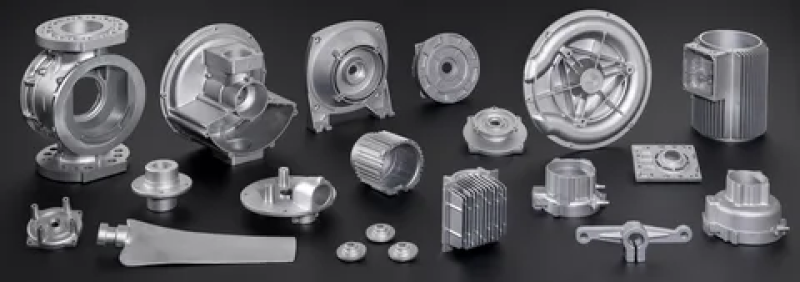Aluminum casting stands as a cornerstone in modern manufacturing, renowned for its versatility, durability, and cost-efficiency. This metalworking technique has transformed multiple sectors including automotive, aerospace, electronics, and construction by enabling the production of complex and lightweight components. Understanding the intricacies of aluminum casting, from its fundamental methods to the latest market developments, offers invaluable insight for manufacturers, investors, and industry stakeholders alike.
Understanding the Aluminum Casting Process and Its Industrial Applications
Aluminum Casting involves melting aluminum alloys and pouring the molten metal into molds to achieve specific shapes and dimensions. This process unlocks the ability to manufacture parts with intricate geometries that are often impossible or uneconomical to achieve through machining or forging. The primary casting techniques include sand casting, die casting, permanent mold casting, and investment casting, each offering unique advantages based on production volume, surface finish, and mechanical properties.
Sand casting is popular for low-volume production and large parts, leveraging expendable sand molds that allow for quick modifications and versatility. Die casting, conversely, excels in high-volume manufacturing and delivers exceptional dimensional accuracy and surface quality, making it a preferred choice for automotive components such as engine blocks and transmission housings. Permanent mold casting combines elements of both processes, providing enhanced mechanical properties due to controlled solidification, widely used in aerospace structural components. Investment casting, though less common for aluminum, is employed for intricate, high-precision parts demanding superior surface finishes.
Across these methods, aluminum’s natural resistance to corrosion, high thermal and electrical conductivity, and favorable strength-to-weight ratio cement its position as an ideal material for components exposed to harsh environments or requiring efficient heat dissipation, such as heat sinks and housings in electronics.
Market Insights and Navigational Guidance to Industry Reports on Aluminum Casting
The aluminum casting market demonstrates robust growth driven by surging demand across automotive manufacturing, aeronautics, and electronics. With automakers increasingly adopting electric vehicles and lightweight structural materials, aluminum casting has garnered accelerated adoption due to its contribution to vehicle weight reduction and fuel efficiency improvements. Additionally, the growth in aerospace manufacturing reflects the stringent need for components with high strength and low density, propelling advancements in casting techniques.
For manufacturers and investors seeking data-centric insights and comprehensive analytics, in-depth industry reports available through specialized research platforms offer valuable intel on regional trends, key players, competitive landscapes, and market forecasts. These reports provide detailed segmentation analysis by casting method, alloy types, end-use sector, and geographic markets. They also outline emerging technologies and innovations, such as additive manufacturing integration with casting processes and the use of advanced alloys to optimize performance attributes.
Users can benefit from navigating to such research compilations to access verified statistics, supply chain dynamics, pricing trends, and regulatory frameworks influencing the aluminum casting industry globally, empowering strategic decision-making.
Transactional Overview of Aluminum Casting Equipment and Material Suppliers
The aluminum casting value chain encompasses a wide range of suppliers delivering raw materials, foundry equipment, and alloy formulations. Transaction activity in raw aluminum alloys is influenced by global metal prices, primarily driven by demand in downstream sectors and geopolitical factors affecting bauxite mining and alumina refining. Foundry machinery suppliers provide automated and semi-automated casting systems, including die casting machines, melting furnaces, molding equipment, and finishing tools, facilitating improved cycle times and quality control.
Recent purchasing trends reveal a shift toward environmentally sustainable equipment, including induction melting furnaces reducing carbon footprints and advanced filtration systems minimizing emissions. Buyers in the casting industry often evaluate suppliers based on certification standards, technological capability, after-sales service, and material consistency to ensure production reliability.
As casting companies look to scale operations or improve product quality, sourcing state-of-the-art machinery and certified aluminum alloys remains a critical transactional decision area, often supported by detailed commercial catalogs and supplier whitepapers accessible through prominent industry portals.
Commercial Dynamics and Future Outlook of the Aluminum Casting Sector
Commercially, aluminum casting is becoming increasingly competitive due to technological innovations and strategic partnerships between casting service providers and original equipment manufacturers (OEMs). The emphasis on lightweight, fuel-efficient automotive parts and precision aerospace components is creating opportunities for specialty casting services that deliver tailored alloy solutions and post-casting treatments such as heat treatment, surface coating, and machining.
Sustainability is also shaping commercial strategies, with initiatives aimed at enhancing recyclability, reducing energy consumption during melting, and adopting green manufacturing practices. Companies investing in research and development of hybrid casting processes and alloy recycling are poised to gain an edge in pricing and market presence.
The sector’s future trajectory indicates expansion into new applications including electric vehicle battery enclosures, renewable energy systems, and high-performance cooling components in electronics, aligning with global trends toward decarbonization and digital transformation.
Get This Report in Japanese Language: アルミ鋳造
Get This Report in Korean Language: 알루미늄 주조
Read More Articles Related to this Industry- What are the Key Developments in the Transparent Aluminum Foam Market?
About Author:
Ravina Pandya, Content Writer, has a strong foothold in the market research industry. She specializes in writing well-researched articles from different industries, including food and beverages, information and technology, healthcare, chemical and materials, etc. (https://www.linkedin.com/in/ravina-pandya-1a3984191)
